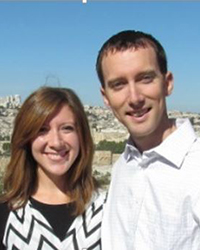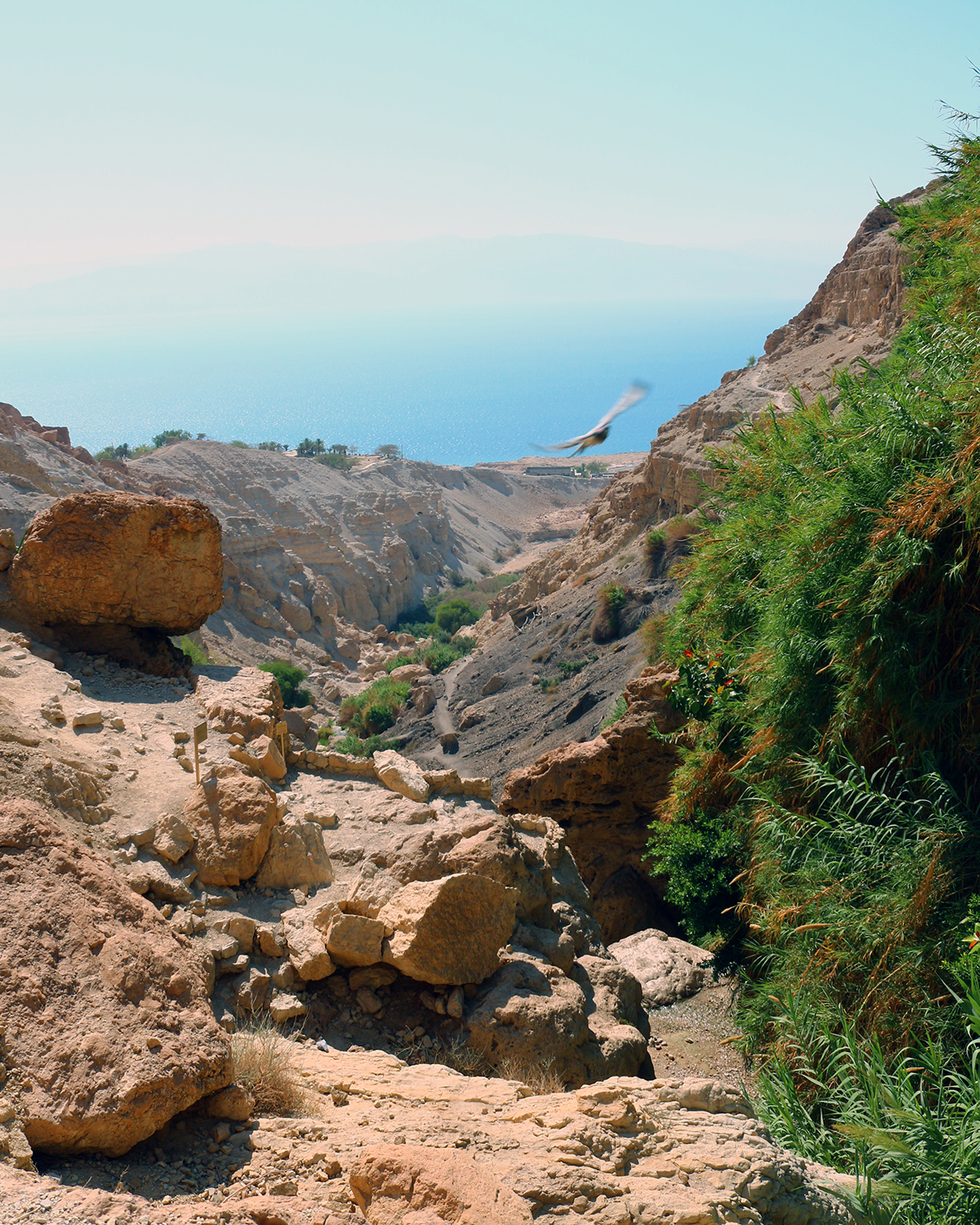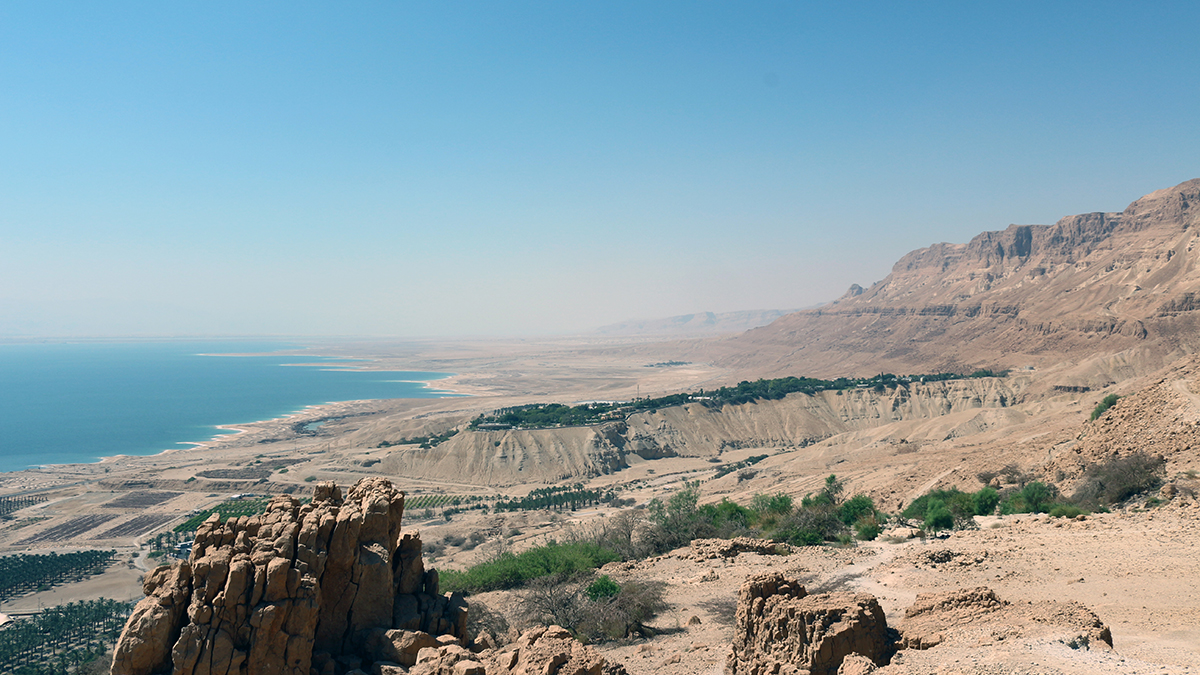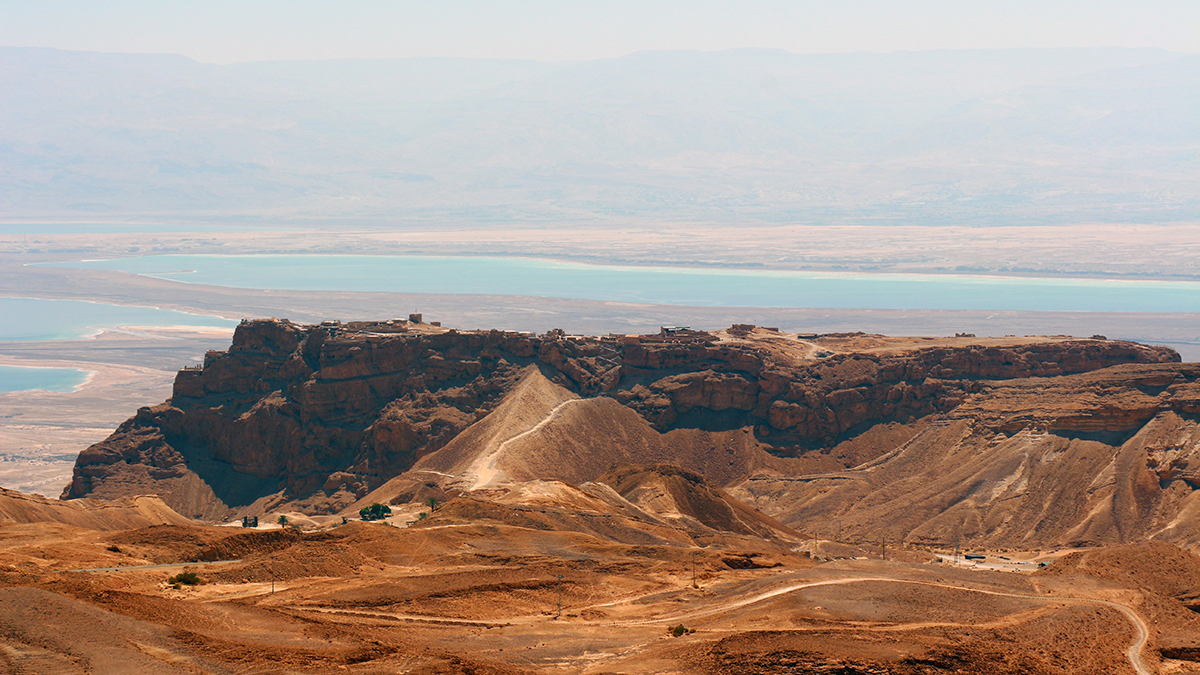

by Trent and Rebekah Dutton
Synopsis: Trent and Rebekah take us on a virtual tour of Ein Gedi and Masada as they discuss "Military Strongholds and the Judaean Wilderness."
Have you ever stood in a location and thought to yourself, "Could I hide an army in this ravine?" or "If I hid my army in this ravine, I would post lookouts here and there, and force any enemies to enter via that narrow pass, where they could easily be picked off?" O.K., for most regular folks, this is not your daily thought process, but if it were, you would know there are several things to consider—especially if you (1) are on the run, (2) have a longing for food or water, (3) need a defensible position, or (4) need to house an army. Many men (and a notable woman or two) of the Bible commanded armies and similar resources. It is an intriguing exercise to visit places where they have been and see the options they had to consider. One of those locations is the Judaean Wilderness.
Ein Gedi ("Kid Spring") and its surroundings have been in use for centuries. From the same style caves and crevasses (wadis) that protected the Dead Sea Scrolls (~200 BC), to crevasses that could hide David and his army (~1,000 BC), it is easy to see how this location made sense. Much like the famous canyons of the American "wild west," an entire army could lie hidden within the expansive folds in the Judaean Wilderness. Rebel soldiers and kings alike could relax among the many caves and waterfalls, while taking advantage of the edible wildlife and surrounding agricultural communities. Yes, plants and springs in the wilderness provided that possibility. From a defensive perspective, just a few soldiers could hold the narrow entrances to a wadi.
Defensively, a network of lookout stations would have a direct line of sight from the spring atop the Ein Gedi wadi, to distant mesas, such as Masada. In the image from the top of the spring, looking south, down the shores of the Dead Sea, a very faint bump appears in the landscape. Seen just to the right center of the image, this is Masada. Some scholars consider this a viable location for one of David's desert strongholds (also noted by Luke Chandler early in this article series). Mentioned especially in 1 Samuel 22:4, David could have easily passed to Moab from the lisan of the Dead Sea (i.e., the large spit of land that now separates the North and the South basins of the Dead Sea) and back to his matsuwd (Heb. "stronghold").
How well Masada and the wilderness proved to be in the defense department is even more evident as Herod the Great rose to power (first century AD). Fearful of his safety, he built (and rebuilt) many fortresses on both sides of the Jordan River, including Herodium, Masada, and Machaerus. Signals from these fortified palaces could be seen from miles around, and any approaching enemy would be spotted from the lofty plateaus. Here again, just a few soldiers could have held the tiny paths leading up this mountain as well.
Unfortunately, having few and narrow entrances also made these fortifications easy to besiege. The view from the back of Masada shows the distinctive siege ramp built by the Romans around AD 70. Masada is most well-known for this episode, where the last holdouts of the Jewish rebel force made their final stand. The story, via our historian friend, Josephus, shows that the rebels withstood the siege until the night before the inevitable breakthrough. To the surprise of the Roman invaders, the rebels all committed suicide before morning light. The only survivors were some women and children who had hidden themselves in one of the enormous cisterns.
Ein Gedi and Masada provide yet another two sites to tuck away as geographical and archaeological references. Their value lies in the stages they provide on which events of Scripture unfold. These sites, like many others, may not offer extensive architecture, material culture, or specific artifacts that are direct connections to Biblical passages, but they do illustrate the landscape and geographical details that the Biblical writers present to us. It is those fingerprints left behind by the writers that show their direct knowledge of the land.
Author Bio: Trent and Rebekah both hold Master's degrees in Biblical Archaeology from Wheaton College in the Chicago, IL area. They have participated in four full excavation seasons with the Leon Levy Expedition to Ashkelon, Israel, and two seasons at Tel Shimron in the Jezreel Valley. They can be reached at trentdutton@gmail.com.

Image 1: View from the top of the Ein Gedi spring, looking down the wadi toward the Dead Sea.

Image 2: View from the top of Ein Gedi looking south toward Masada.

Image 3: View from the rear entrance to Masada with the Roman siege ramp in the center.